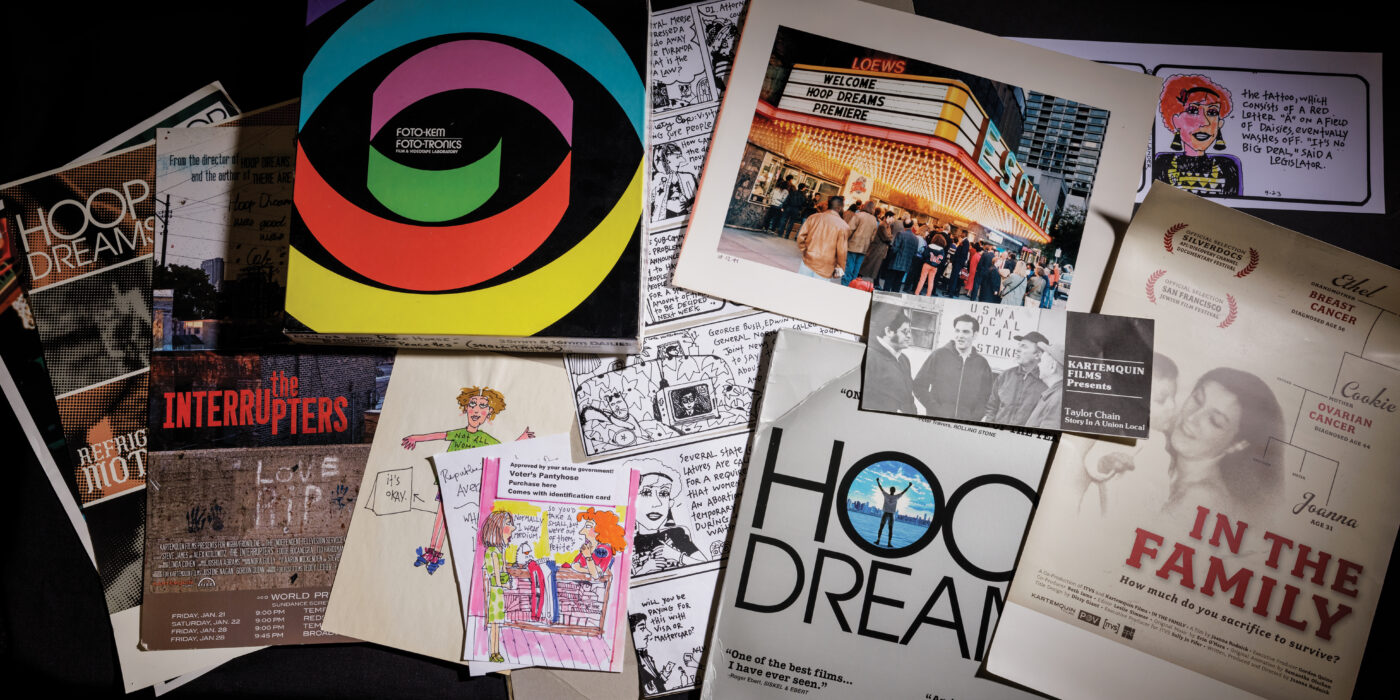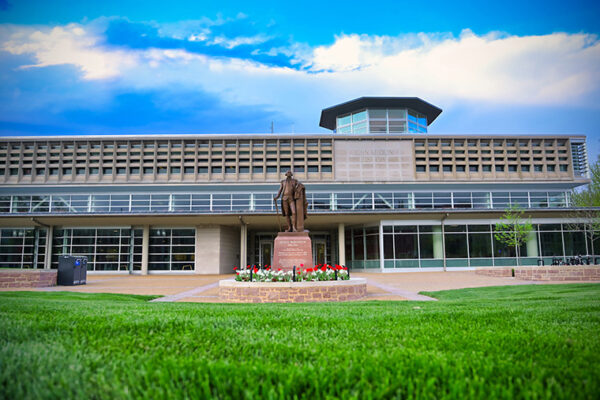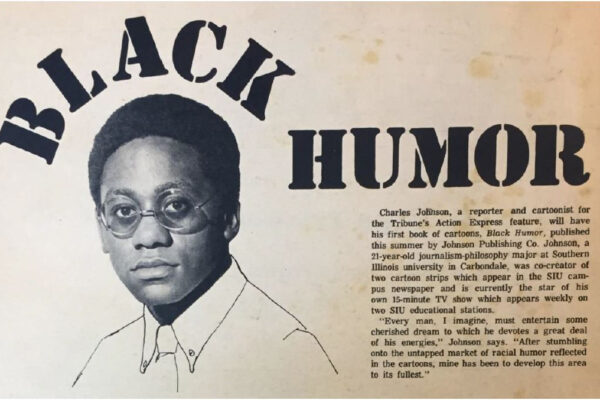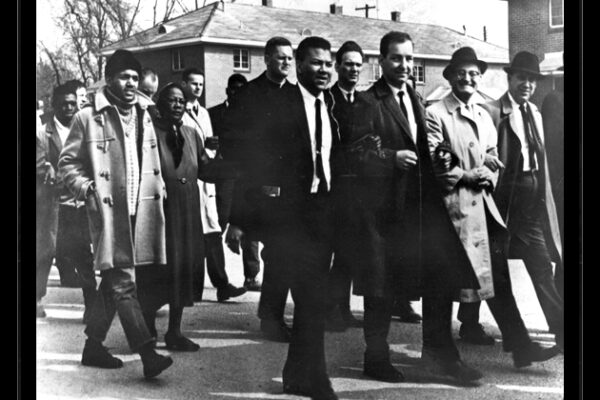In 1998, a group of American and Vietnamese veterans joined forces to travel 1,200 miles along the coast of Vietnam from Hanoi to Ho Chi Minh City by bicycle. Some cyclists were able-bodied; disabled riders used special hand-powered bikes, while blind riders joined on the back of tandems. The 16-day trek, sponsored by World T.E.A.M. Sports, challenged the group physically, with uneven terrain and excruciating heat, and psychologically, as long-buried trauma resurfaced and presented as emotional head- winds. The poignant journey is documented in the film Vietnam: Long Time Coming, produced by Chicago-based Kartemquin Films in 1998.
At the documentary’s outset, a few of the Americans visit a prestigious girls’ school in Hanoi. One young student asks the veterans, “What do you think of the development of Vietnam society today?” Another asks, “Before you come to Vietnam, what do you hear about Vietnam?” And yet another, “You were in Vietnam 30 years ago, what was the most unforgettable memories of y’alls about Vietnam?”
Jerry Stadtmiller, a rifleman in the U.S. Marine Corps from 1967–69, emotionally responds to the last question: “The most regrettable experience I had was having to point a rifle at another young boy, and knowing that if I didn’t kill him, he was going to kill me. I pulled the trigger on my rifle. And I’ve had to live with the guilt of killing other young boys whom I didn’t even know. And that’s, I believe, been the pain of most Americans for the last nearly 30 years. We were asked to come over here to fight for freedom, and once we got over here, we realized freedom had nothing to do with it.”
Vietnam: Long Time Coming, which is part of the Kartemquin Films Collection acquired by WashU Libraries in 2021, addresses the heart-wrenching realities of those who served in or who were directly impacted by the Vietnam War. Throughout the Emmy Award–winning film, subjects move through recollection to reconciliation and, ultimately, redemption.
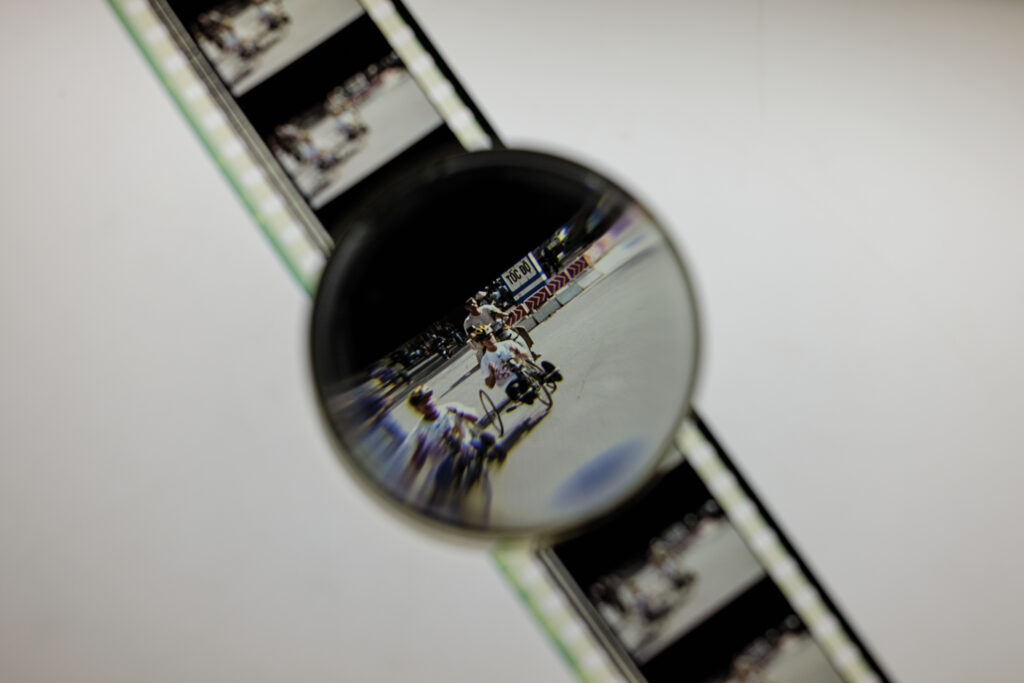
Spotlighting difficult social and political issues is what distinguishes Kartemquin Films. Since its founding in 1966, the nonprofit has produced 70-plus award-winning documentaries on topics including immigration, labor issues, stem-cell research and women’s rights.
Kartemquin Films is also known for tackling subjects in an authentic, humane and ethical manner. In a 2016 documentary that examines the history of the nonprofit — Craft, Community, Change: 50 Years of Kartemquin Films — Judy Hoffman, a filmmaker, stresses: “We made films we thought our audience needed to see. We would tell stories from the street level.” Then filmmaker Steve James emphasizes, “One of the things that is at the heart of what Kartemquin is about, is this sort of deep humanity and understanding people in a more complex way than simply as symbols of some social issue.”
Today, nearly 60 years after Kartemquin’s founding, the Julian Edison Department of Special Collections Film & Media Archive (FMA) is working hard to organize and make available materials that provide details into the complex processes behind creating such important, deeply human documentaries, archiving an extensive collection of materials from Kartemquin Films dating from 1966 to 2008.
Handling with care — and intentionality
When Kartemquin needed a partner to archive its materials, specifically its work prior to the digital era in 2008, it ultimately chose Washington University because of the FMA’s handling of the films of Henry Hampton, AB ’61, Hon DH ’89, and his extensive Blackside Inc., collection. In 2001, the FMA acquired 35,000-plus items from Blackside, including interviews with key figures in the civil rights movement for Hampton’s Eyes on the Prize, which is still considered the definitive work on the civil rights movement. The FMA did the cataloging, preserving and promoting of materials for educational and scholarly use by students, faculty and filmmakers, as well as by institutions and researchers in the St. Louis community and beyond.
“We’d done good work on the Hampton Collection — getting grants, promoting it, making it accessible. So when the folks at Kartemquin were looking for a partner, they saw that work and were impressed.”
Andy Uhrich
“We’d done good work on the Hampton Collection — getting grants, promoting it, making it accessible. So when the folks at Kartemquin were looking for a partner, they saw that work and were impressed,” says Andy Uhrich, former curator of the Film & Media Archive. “There are differences between the Blackside and Kartemquin collections, but they’re similar kinds of documentaries, both appeared on PBS, and they had similar formats. So it proved to Kartemquin that we could handle large collections, and that we also had a commitment to the social issues that are covered in the documentaries.”
Kartemquin conducted an initial inventory of its films and supporting materials. Then WashU Libraries hosted Kartemquin representatives for a site visit and shared how the collection would be handled and promoted. After hours of discussion, Kartemquin chose WashU as the permanent home of its archive.
And so in April 2021, the Kartemquin Films Collection arrived at WashU’s West Campus via an 18-wheeler. Thirty-nine pallets held 3,500 cans of film, more than 11,000 videotapes, 2,000-plus audio items and 440 boxes of paper related to the films.
After the unpacking and sorting of materials, which took months, Uhrich says, the priority since then has been on separating and cataloging the paper and media assets. Now, four years since the collection arrived at WashU, a finding aid of the boxes and folders of paper (their scope and contents) is available for researchers. And an online searchable catalog for the film, video and audio assets is nearly complete.
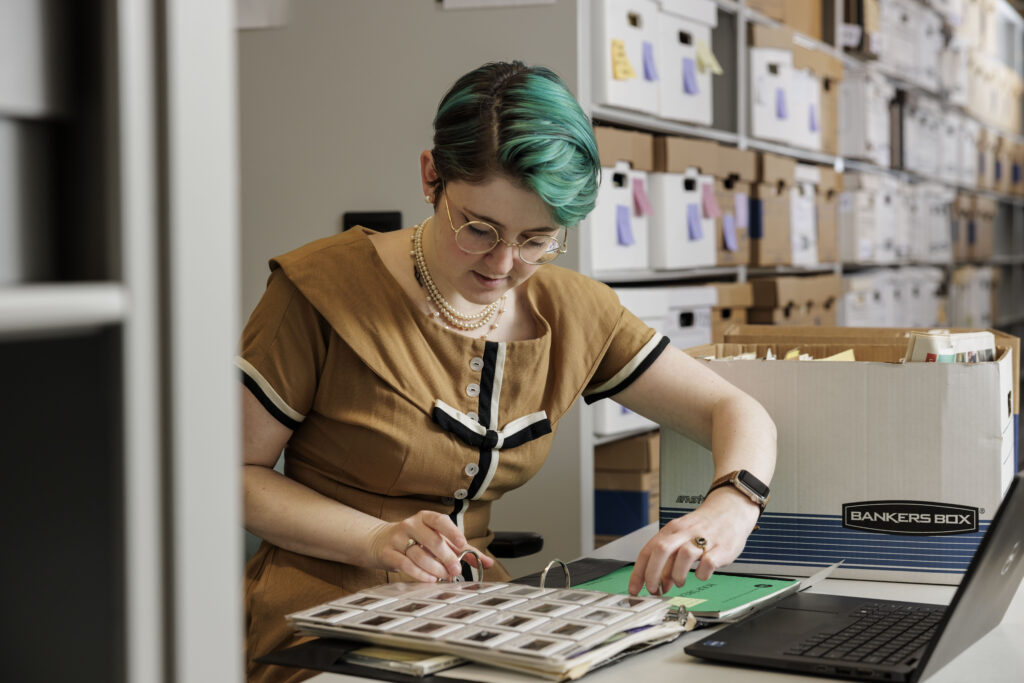
“For Kartemquin, the relationship with WashU means much more than a sanctuary for the collective body of work that makes up the Kartemquin catalog,” says Betsy Leonard, executive director of Kartemquin Films. “It’s knowing that you have partners who share your values of access and democratization of information and who take great care not only to preserve but to activate the collection. Many of the films are evergreen — the issues, challenges and complexity they uplift are as relevant today as when they were made — but creating the finding aid and promoting access is what makes the difference.”
Among the thousands of items included on the finding aid are binders and files related to transcripts, promotional materials and study guides for a film called The New Americans. A seven-hour miniseries released in 2003, The New Americans offers honest, dramatic, often painful observations of the lives of five immigrant and refugee families over the course of four years. One of the opening lines of the series introduces viewers to the hardships to come for those originating from India, Nigeria, Palestine, the Dominican Republic and Mexico: “Once you leave your motherland, the land you are proud of, it’s always hard.” Or as a woman who brought her family to the U.S. to join her husband lamented: “I’m leaving my most precious treasure behind [my papa]. He’s carried me from childhood to adulthood. I want to go, and yet, I’m really conflicted.”
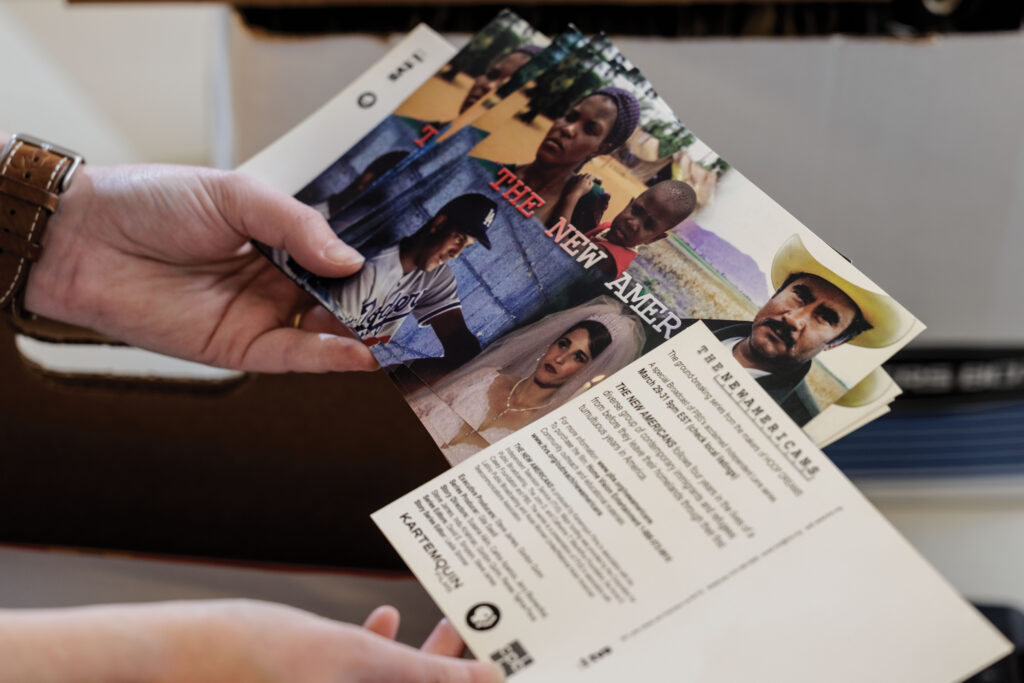
Showcasing the courage, painful experiences and enduring hopes and dreams of humanity is a recurring theme in Kartemquin documentaries. In Mapping Stem Cell Research: Terra Incognita (2007), for example, filmmakers share the story of Jack Kessler, MD, the head of Northwestern University’s neurology department hired to use stem cells to help cure diabetes. But fate intervened when his daughter became paralyzed from the waist down after a skiing accident. It was then that Kessler decided to change his focus to look instead for a cure for spinal cord injuries. The documentary, which won a Peabody Award in 2009, is described by the Independent Television Service as bringing “the stem cell debate to the forefront and [examining] the constantly evolving interplay between the promise of new discoveries, the controversy of modern science, and the courage of people living with devastating disease and injury.”
And in Hoop Dreams, filmmakers follow William Gates and Arthur Agee, two young African Americans in Chicago, through their tumultuous high school years and their dreams of becoming professional basketball players. The widely acclaimed film, perhaps Kartemquin’s most well-known documentary, also was a Peabody Award winner in 1995.
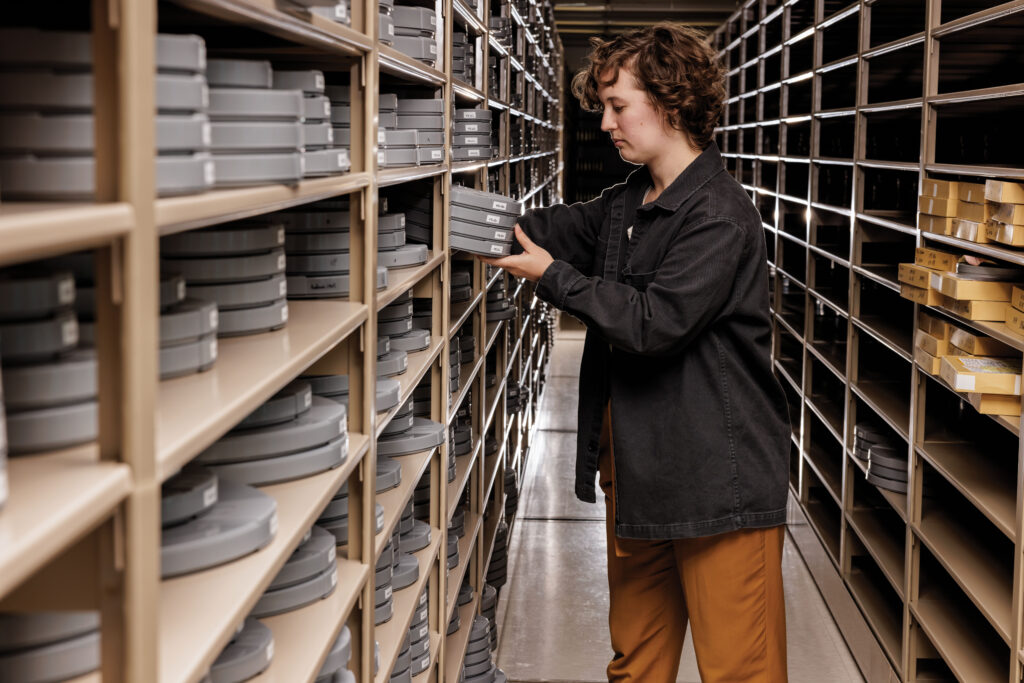
Many Kartemquin Films, however, are not as widely known as Hoop Dreams. And according to Uhrich, part of FMA’s planning for Kartemquin’s 60th anniversary in 2026 is to explore some of these lesser-known work-for-hire films.
“This is where it gets complicated with Kartemquin, and this is not uncommon for documentary filmmakers,” Uhrich says. “You make your big movies because the subject matter is important. And then you also do work for hire, so you can get paid. You get hired by the MacArthur Foundation, for example, and you make a short documentary. Or you get hired by, say, an airline pilots union, and you make something for them.”
The FMA cannot digitize film in house, but it can digitize videotapes. So Uhrich says they’re looking at these lesser-known titles on videotape, such as Great Expectations: Life and Death in the World of High Tech Medicine. Although unfinished, there is a 14-minute demo tape made by Gordon Quinn, who is a founder of Kartemquin and the reason why the film got included in the collection.
“For Kartemquin, the relationship with WashU means much more than a sanctuary for the collective body of work that makes up the Kartemquin catalog. It’s knowing that you have partners who share your values of access and democratization of information and who take great care not only to preserve but to activate the collection.”
Betsy Leonard
“We’re going through and locating all those types of titles and making sure we get them digitized,” Uhrich says. “Because of rights issues, we may or may not be able to put them up online, but we can put them in our catalog record and provide researchers, students, high schools, etc., access to them.”
The FMA is also planning online exhibits, as it did with the Henry Hampton Collection.
“Next year is also the 250th anniversary of the United States, so we’re thinking about civic involvement, too,” Uhrich adds. “We’re thinking about the possibility of having a screening and/or program on some of the things we have in our collection around voting rights, activism, Rosa Parks interviews — and then possibly pairing up parts of the collection with organizations in town and tying it to the 250th anniversary.” The FMA hopes to leverage its long-standing relationship with Cinema St. Louis/SLIFF to raise awareness of Kartemquin’s work and the collection in the greater St. Louis community through free public screenings. (Check back here for more information on upcoming academic and public programming to celebrate the 60th anniversary.)
“We’ve seen time and time again how these films and the way they were made — the consciousness, intentionality and ethical debates during production and editing — are influencing filmmakers today,” Leonard says. “By opening up access to a whole new generation of viewers and filmmakers, WashU and Kartemquin are fulfilling a mission to use documentary as a tool for democracy.”
